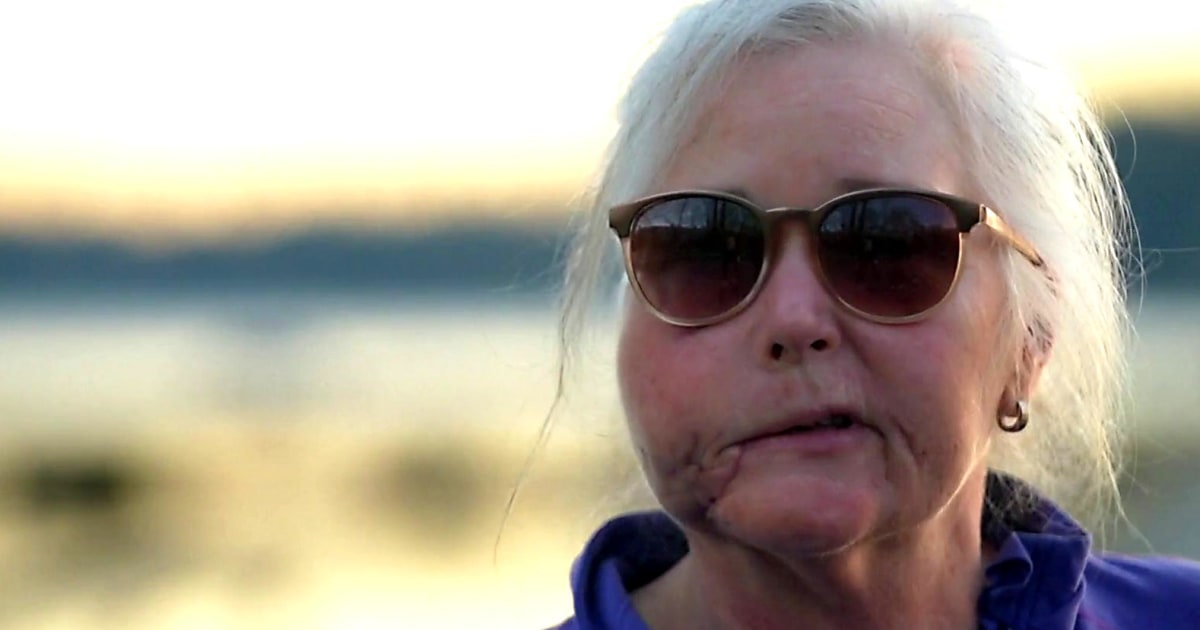The cat dialed back pressure through its crushing jaws, and the friend was able to pull away, fellow cyclists said in an interview one month after the incident east of Seattle.
A group of Seattle-area cyclists who helped one of their own escape the jaws of a cougar recounted their story this weekend, saying they fought the cat and pinned it down.
The woman who was attacked, Keri Bergere, sustained neck and face injuries and was treated at a hospital and released following the Feb. 17 incident on a trail northeast of Fall City, the Washington Department of Fish and Wildlife said in a statement.
Bergere said she spent five days at an area hospital and was still recovering.
Fish and Wildlife Lt. Erik Olson called the actions of her fellow cyclists “heroic” in the statement. But the extent of the cyclists’ battle with the 75-pound cat wasn’t immediately clear then.



Interesting question arises from that - is a cougars life worth humans not venturing freely in forests (basically ‘the sacrifice of not being able to use that bike trail’, intentionally, for the good of the wildlife)?
And attacking a group of not that slow humans sounds a bit like distress. I don’t know anything about that situation, don’t claim to, just saying that disease and perhaps demeanour aren’t the only two things that can result in an attack like that - an attack which does sound like an attack-to-kill-for-food situation (the part where it didn’t let go of the face for 15 minutes) and not just for the sake of attack.
I think this is an excellent question to put out loud. I’m sorry someone downvoted you but it really is worth asking and thinking about. To be clear I am not saying that I think the answer is “yes.” But this sort of thing isn’t without precedent.
Story time: I used to be a very avid cave explorer and I enjoyed it more than just about anything. Caving is a tough sport to do though because many caves are on private property and the landowners often refuse access. So a lot of caving is done on national forest/park land. Around 2006, an invasive species of fungus arrived in the USA from Europe. This fungus infected multiple species of bats with a high mortality rate but didn’t affect humans (White Nose Syndrome is the disease name). Over the next few years the spread of disease was well documented, predominantly along the known migratory routes of the affected species.
In reaction, the National Parks and National Forest managers started closing off access to caves on public land, as a ‘precaution.’ Caving as a sport essentially became nearly impossible for most people overnight. This isn’t a mainstream, popular activity like mountain biking so nobody outside of cavers gave a shit and there wasn’t much of an uproar and the policy stood. The national park where I spent most of my time still has all caves closed to recreational caving.
So the people who manage these public lands absolutely do ask the question of when animal lives outweigh human use and I think that publicly asking those questions is a good way to make sure we don’t have the decision made for us without having a chance to weigh in.
I really miss caving. /rant
Also a caver who was effected by the policy, and while I miss the hell out of spelunking, I love bats more. I have 2 small caves on my farm and have never been in them for that reason alone, also have multiple bat boxes I’ve built for them as well. My need to cave outweighs the need for these creatures to exist.
I totally hear you and respect your decision. That said I think very few of these decisions are as binary as it seems when presented by authorities: